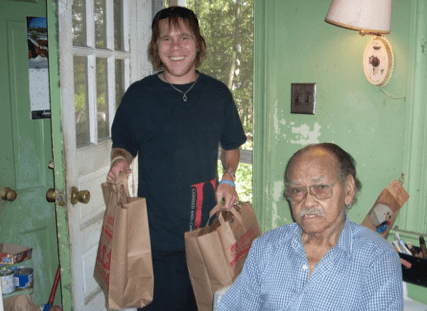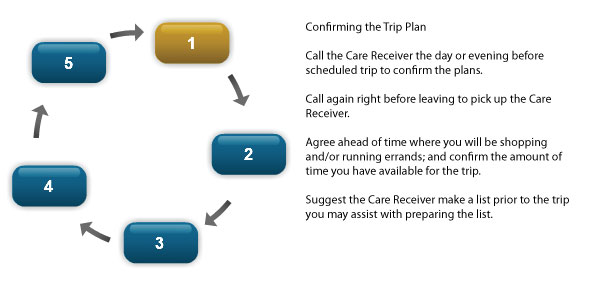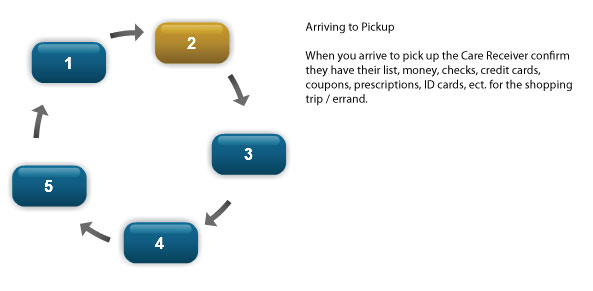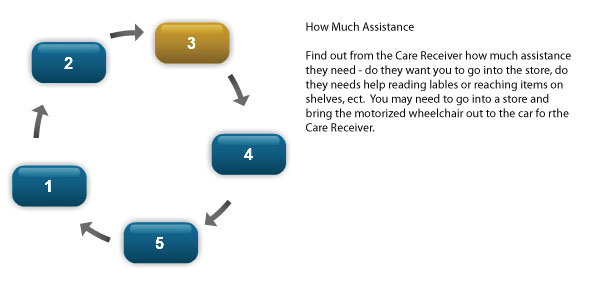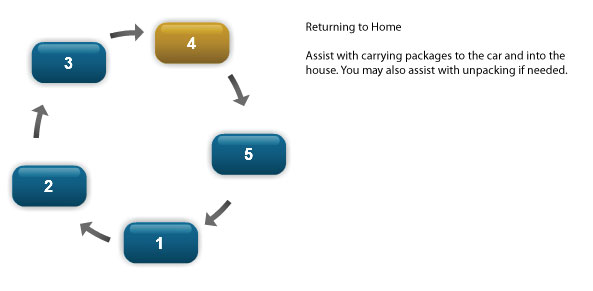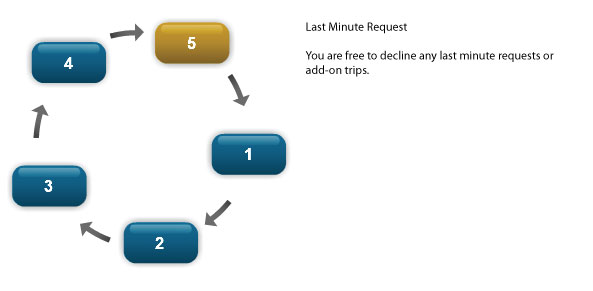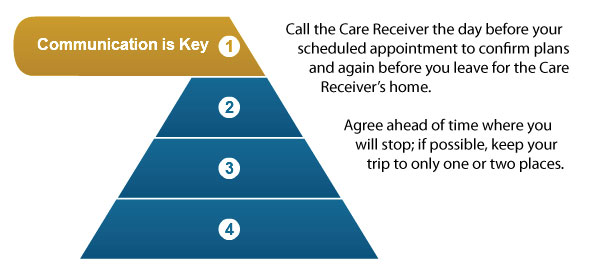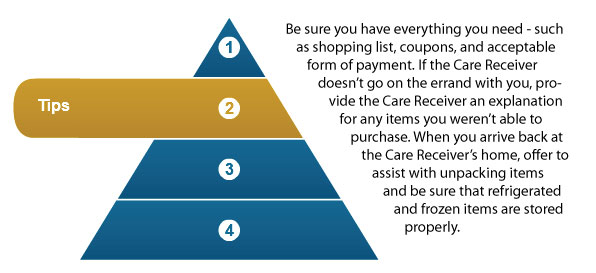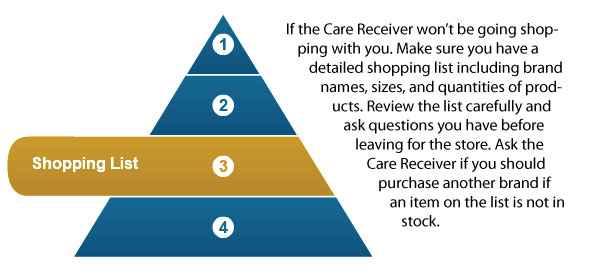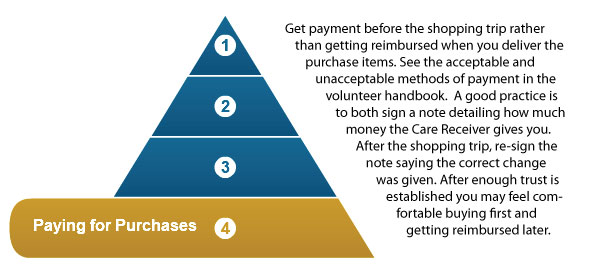Transportation
General Transportation Policies

Volunteer Age Requirement
Check with your local organization’s coordinator to learn their minimum age requirements for transport drivers.
Vehicle Requirements
You will be transporting the care receiver in your vehicle. Therefore, it must be in proper working condition and be licensed and insured. Your organization’s coordinator will require a copy of your driver’s license and proof of automobile insurance coverage to keep in the organization’s files.
Care Receiver Requirements
Care receivers must be able to get into and out of the vehicle with minimal assistance. You should be aware of your care receiver’s physical limitations, such as climbing steps or walking distances. You may transport canes and walkers but may not transport without special arrangements wheelchairs.
Volunteer Do's and Don'ts
Volunteer Do’s:
Safety of the care receiver is the highest priority, please keep a cell phone with you in case of an emergency – but do not use it while driving.
Be a safe and courteous driver, and obey all traffic laws, regulations and speed limits.
If you transport a wheelchair (in some cases this may be acceptable, check with your local organization), the care receiver must be able to get out of the chair and into the car on their own. And be sure the wheelchair is available for the care receiver at the end of the ride.
Volunteer Don’ts:
You are not permitted to lift or carry a care receiver.
In most cases, you are not permitted to drive the care receiver’s vehicle – check with your local coordinator.
Never take responsibility for transporting a sick or injured care receiver in their own vehicle.
Do not park in handicap parking unless proper identification is displayed in the vehicle.
Inclement Weather
If you are uncomfortable about providing transportation services because of inclement weather and/or road conditions, notify your local coordinator.
If the pavement is wet or icy, assist the care receiver by holding onto their arm to prevent falls.
In the case of an accident, your insurance policy is the primary coverage.
Reviewing Ride Requests
Local coordinator will provide volunteers the name and address of the care receiver, the appointment time, and the location and phone number for the destination, along with information about any special arrangements.
Medical and other occasional ride requests are generally for round‐trip services, although one-way trips may also be provided. Rides for appointments that will be 2 hours or longer may be split into 2 one‐ way ride requests: one driver taking someone TO the destination, and a different volunteer picking someone up FROM the destination.
A volunteer should allow some flexibility to allow for unanticipated delays. Volunteers should allow extra time for traffic, weather or other unforeseen circumstances in transporting care receivers to appointments.
What to do Before, During, and After a Ride
Calling the Care Receiver
You must call the care receiver 1-2 days before you are transporting the person.
Introduce yourself; clarify the details and any other aspects of the ride.
If this is the first time you are providing this service to this care receiver, describe your appearance and vehicle to assist them in recognizing you.
Make an additional call an hour or two before picking up the Care Receiver. Care Receivers often have changing health conditions that could call for a change of plans. The Care Receiver may be forgetful about the arrangements or double-booked with another ride source. Either way, this additional call will help ensure that plans are on track as scheduled.
At the Care Receiver's Home
You will most often provide this service for medical appointments.
When you arrive at the care receiver’s home, go to the door and identify yourself by name and note you are a volunteer for your local caregiving organization.
At the Destination
Be prepared to escort the care receiver into the office; however, some care receivers may prefer to be dropped off at the curb.
Assist the care receiver with checking in if needed; inquire about the length of the appointment; make arrangements with the care receiver to either wait or to return at a specific time; and also clearly identify the specific place you will meet – inside the waiting room, pick-up area, etc.
You may leave your cell phone number with the receptionist (not the care receiver) so they can call you when the care receiver is ready to be picked up.
Do's and Don'ts
Make sure medical personnel do not mistake you for a family member; personal health information should not be shared with you.
Do not transport care receivers from the doctor’s office to a hospital or any other place than back to their home; the doctor’s office can arrange for an ambulance if needed.
NVCN and its member organizations will not be held liable for a volunteer who takes medical responsibility for a care receiver.
The Ride Home
It is your sole discretion about adding any other stops on the way to the care receiver’s home from a medical or other occasional ride.
Grocery Shopping and Other Essential Errands
Shopping and Running Errands
Acceptable methods include:
- Checks made out to the store and signed by the care receiver
- EBT cards (Food Stamps) with PIN ‘s
- Cash
- Store gift cards
To avoid Identify Theft or other risky loss, bank debit cards and credit cards are not an acceptable form of payment.
